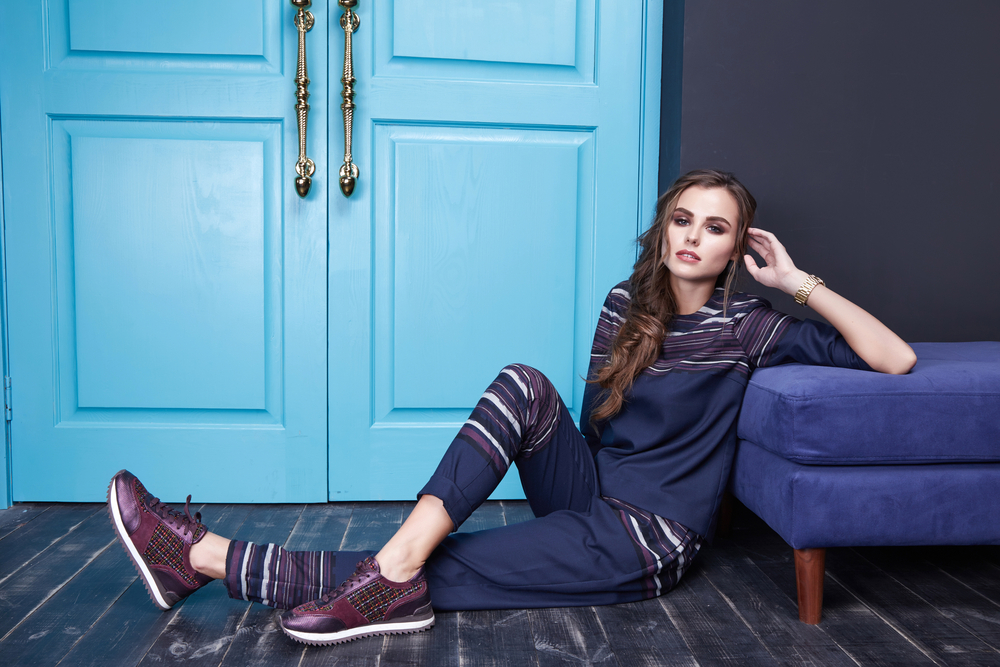
The Art of Modeling: Unveiling the Secrets and Challenges of the Fashion Industry in Photoshoots

The world of fashion is a mesmerizing realm that constantly captivates us with its glamour and high-end designs. At the forefront of this industry are models, who embody the vision and creativity of designers, photographers, and stylists. But what really goes on behind the scenes of a fashion photoshoot? How do models bring life to the outfits they wear, and what challenges do they face? In this article, we delve into the art of modeling , revealing the secrets and shedding light on the challenges encountered in the fashion industry.
Models are the heart and soul of a fashion photoshoot. They are responsible for showcasing the garments and bringing them to life through their movements, expressions, and charisma. However, the beauty we see in the final images is often a result of meticulous planning and hard work that goes on behind the scenes. Let's explore the different aspects that make up the art of modelling .
The Importance of Posing
One of the key skills that every model must master is the art of posing. Posing is the foundation on which the success of a fashion photoshoot is built. Experienced models understand how to use their bodies and facial expressions to create visually striking images that grab the viewer's attention. Each pose is carefully thought out to accentuate the lines, shapes, and details of the garment being showcased.
Different types of modeling require specific poses. In high fashion, models often display strong and exaggerated poses to convey a sense of drama and expression. On the other hand, commercial modeling calls for a more relatable and approachable look. Understanding the requirements of a photoshoot and adapting poses accordingly is a skill that takes time to develop.
Working with a Team
Behind every successful photoshoot stands a team of professionals who collaborate to create stunning visuals. Models work hand in hand with photographers, stylists, hair and makeup artists, and creative directors to bring the designer's vision to life. An effective collaboration among team members is crucial for the overall success of the photoshoot.
Models receive guidance from the creative director and photographer regarding the mood and emotions they need to portray. They work closely with stylists to ensure that the clothing is showcased in the most flattering and fashionable way. Hair and makeup artists play a vital role in enhancing the overall look of the model, adding the finishing touches to create a cohesive image.
The Demanding Nature of the Industry
The modeling industry is notorious for its demanding nature. Models face numerous challenges, including long hours, constant traveling, strict diets, and maintaining a flawless image. The pressure to look perfect at all times can take a toll on both physical and mental well-being.
Constant rejection is another challenge that models face. The industry is highly competitive, and landing a job requires dedication, persistence, and resilience. Models often go through multiple castings and auditions before they are selected for a photoshoot or runway show. It's important for models to maintain a positive mindset and remember that rejection is not a reflection of their talent or worth.
Breaking Stereotypes and Promoting Diversity
In recent years, the fashion industry has made strides towards breaking stereotypes and promoting diversity. Models of all shapes, sizes, ethnicities, and genders are now being embraced by major fashion brands. This shift toward inclusivity has opened up opportunities for aspiring models who may have previously been overlooked.
The industry continues to evolve, with many models using their platforms to advocate for social change and challenge established beauty standards. By showcasing a broader range of faces and bodies, fashion is becoming more representative of society as a whole.
Frequently Asked Questions
Q1: How do models handle the pressure of maintaining a perfect image?
A1: It's important for models to prioritize self-care and maintain a healthy mindset. Having a strong support system, practicing self-love, and seeking professional help when needed can help models navigate the pressure.
Q2: What skills does a model need to succeed in the industry?
A2: Apart from possessing strong posing skills, models also need to be adaptable, professional, and have excellent communication skills. They should be able to take direction well and work efficiently in a team setting.
Q3: Are there age restrictions for models?
A3: The industry offers opportunities for models of various age groups. While there may be a focus on young models in high fashion, commercial modeling often includes individuals of different ages, including mature models.
Q4: How can aspiring models get started in the industry?
A4: It's important for aspiring models to build a strong portfolio, attend casting calls and auditions, and network within the industry. Working with reputable modeling agencies can also increase their chances of getting noticed.
Q5: How can models cope with rejection?
A5: Rejection is part of the industry, and models must learn not to take it personally. By maintaining a positive mindset, staying persistent, and continuously improving their skills, models can navigate through rejection and find success.
In conclusion, modeling is an art that requires skill, hard work, and resilience. Behind the scenes of a fashion photoshoot, models work alongside a team of professionals to bring the designer's vision to life. They master the art of posing, cope with the demands of the industry, and break stereotypes by promoting diversity. The art of modeling is a reflection of our ever-evolving society, showcasing the beauty and creativity that lies within the fashion industry.
Other useful resources
- https://www.planetmodelphoto.com
- https://www.planetmodelphoto.com/models/modeling/usa/wilmington/nc-north-carolina
- https://en.wikipedia.org/wiki/Category:Modeling_(profession)
- https://en.wikipedia.org/wiki/Category:Models_by_modeling_agency